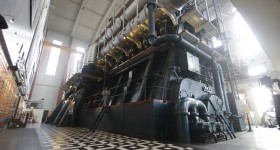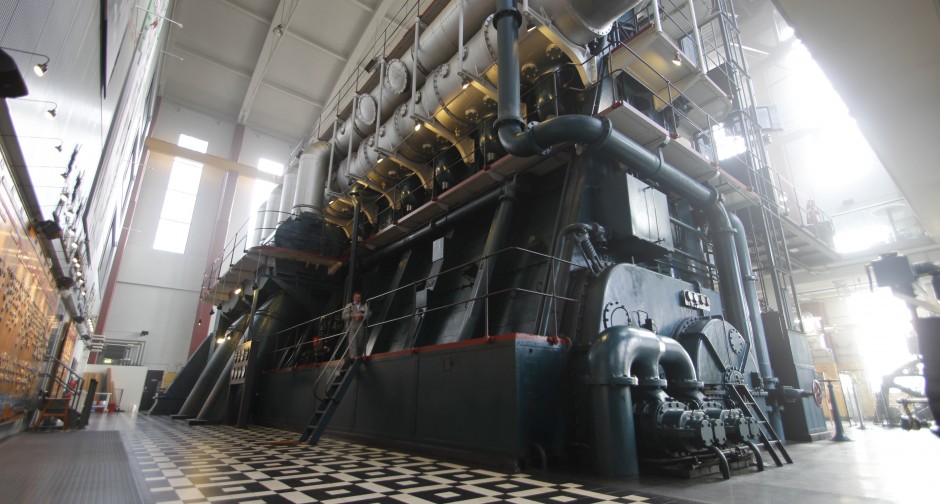H.C. Ørsted engine – running
Engine running
0 - 1:45
Recorded on 10 meters distance
Engine run
1.45- 3.33
Walking around close to the engine.
From its first trial run in 1933 and some 30 years ahead, the H.C. Ørsted engine was the largest land-based power plant engine. Up until the late sixties, the purpose of the engine was to generate electricity to Copenhagen and most of Zealand during the peak loads of the electricity grid, in the morning and at 15.00-16.00 when most people got off from work. During the Second World War, the H. C. Ørsted power plant and its engine played an important role as a hideout for the resistance movement and a place where they could store weapons and other resistance effects.
A special feature of the engine is that it is a double-acting two-stroke engine. This means that ignition takes place both when the piston is in its top position and when it is in its bottom position – a technology which is no longer in use.
H.C. Ørsted engine
Cylinders = 8
Length = 24.5 m
Height = 12,5 m
Output = 22,500 effective horsepower
Total weight = 1 400 tons
1 complete cylinder = 20 tons
Weight of the 730 mm thick crankshaft = 140 tons
Turning wheel = 80 tons
The engine was last in use during the extensive power breakdown in 2003 that hit Copenhagen and most of Zealand and large parts of Sweden. The engine’s ability to start unaided without the use of electricity meant that it played a major role in the efforts to re-establish power, because modern-day engines need electricity to be able to start.
Today the engine is started to enjoy the attending public.
Sound level
Before start: 63 dB
Engine working: 102,6 dB, measured 10 meters from the engine.
Sound recordist: Torsten Nilsson
Photographer: Torsten Nilsson
Video recordist: Torsten Nilsson
Specs:
Filesize:
Duration:
Channels:
37.6 MB
3 min 33 s
2 (Stereo)
Bit rate:
Bit depth:
Level:
1411 kb/s
16 bit
103 dB
Recorded on November 11, 2014
Power plant
Copenhahen, DENMARK
Creative Commons License





